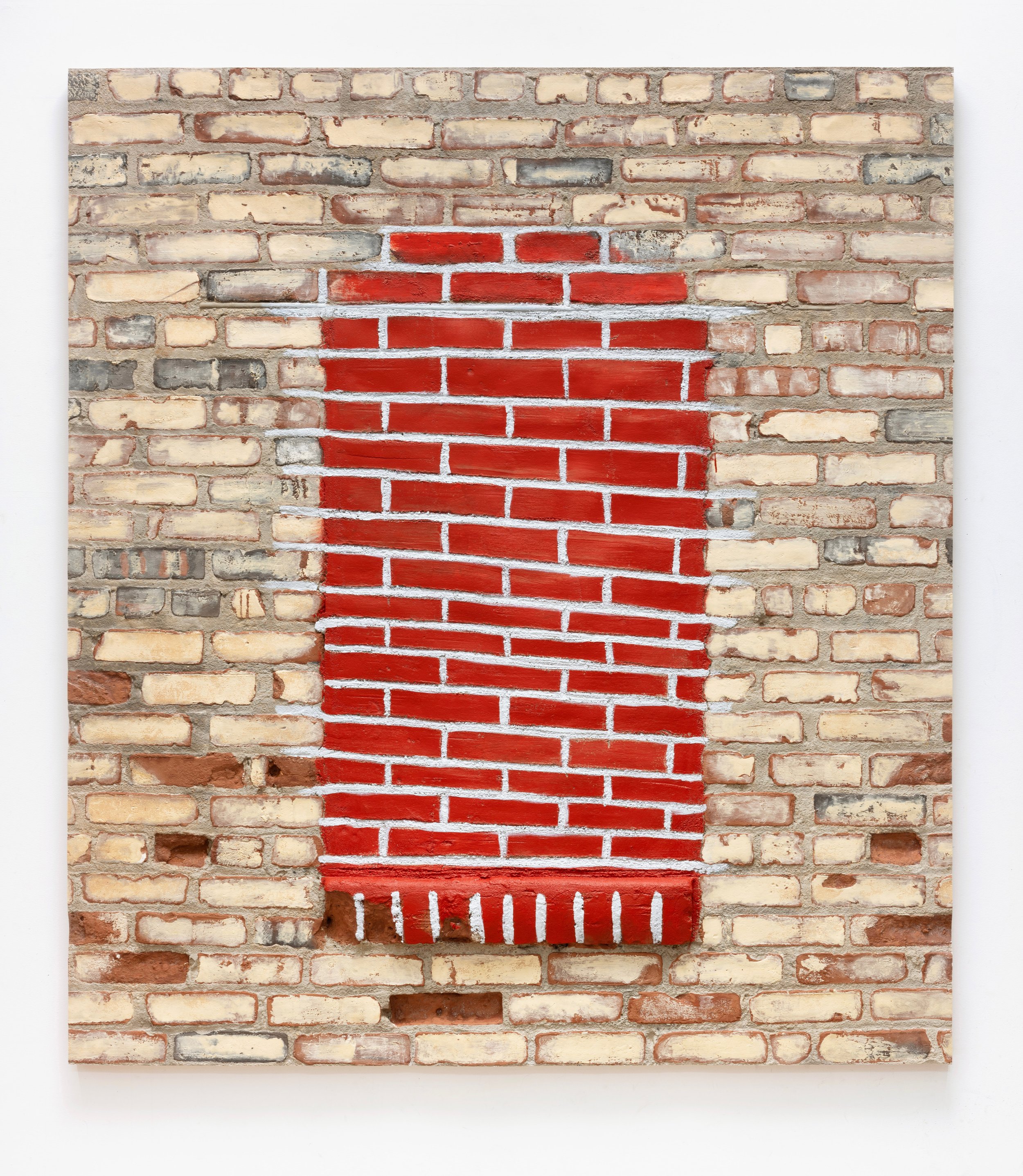Michael Henry Hayden
works exhibitions news about
speaking in translation
April 11 - May 31, 2025

exhibition text
Moskowitz Bayse is pleased to present Speaking in Translation, an exhibition of new works by Los Angeles-based artist Michael Henry Hayden. This exhibition is the artist’s third with the gallery, and will be on view April 11 - May 31, 2025.
In Speaking in Translation, Michael Henry Hayden examines systems of meaning and their limits, underscoring the permeability between legibility and perception. Across the six works on view, patterns emerge, natural formations echo human codes, languages dissolve into abstraction, and surfaces conceal as much as they reveal. By disrupting scale, material, and interpretation, works challenge the instinct to impose meaning, asking whether the act of reading is akin to projection rather than discovery.
The painting titled The Whiteness of the Whale depicts a page from a Braille edition of Moby-Dick–specifically the opening portion of the chapter of the same name. This passage explores the complex and often contradictory symbolism of the color white, which can evoke emptiness, terror, and death as much as it can clarity, purity, and innocence. The novel’s narrator fixates on this unsettling duality, associating the color with illegibility–something simultaneously full of meaning and devoid of it. The Braille depicted in Hayden’s painting echoes this ambiguity; though it holds rich information, it remains inaccessible to both the sighted and the blind, as it is rendered flatly in paint. The illusion of texture resembles waves on the ocean’s surface, hinting at the hidden depths beneath, just as the elusive white whale lurks unseen beneath the water. The canvas itself is proportioned to the aspect ratio of this sheet of text. All the subsequent works in the exhibition adhere to the same format, like pages in a book.
In Summit, overlapping sheets of colored paper suggest an abstracted mountain range. The canvas is shaped to conform to the folds, nudging the work into a sculptural object. The painting is rendered to heighten the feeling of three-dimensionality, and suggests a dual scale shift. Cut paper is presented at larger-than-life size, and the alluded vast landscape is compressed to human scale. This work mirrors the artist’s interest in the movement from a flat surface to a dimensional one and vice versa, reinforcing the notion that the simplest of objects or gestures can embody complex and dualing ideas.
Coded natural phenomena are exemplified in works like Found Imagery, a closely cropped detail of poisonous shells, the intricate markings on which recall Japanese landscapes, Morse code, or the Richter scale–systems that suggest meaning but resist easy translation. The layering of these markings, naturally formed in hard enamel deposits over time, mirrors the way language and imagery evolve, with each new addition both clarifying and complicating any one past interpretation. The relief work Surface Tension recreates a tree root’s fissure in an asphalt parking lot, transforming a natural intrusion on the built environment into an allusion of geological upheaval.
Likewise, Mimic juxtaposes a relief cast from a weathered and otherwise unremarkable concrete wall in Tokyo, the markings on which bear an uncanny resemblance to Mount Fuji, and a pixelated painting of the mountain derived from a tiled bath house mural. In these two modes of expression placed literally on top of one another, the former is an indexical imprint of the real, and the latter, a representation mediated through human artifice. The combination is not ironic, but revelatory, exposing the conditions under which images emerge, are recognized, and ultimately become naturalized.
A related tension animates Bad Translation, a low-relief sculpture cast from an existing brick wall in which a window has been filled with concrete and painted over in an attempt to mimic the surrounding bricks. The artwork faithfully reproduces this awkward camouflage. The grey and yellow tones of the real bricks give way to cartoonish red and white, while rigid geometry devolves into wavering hand-drawn lines. By replicating both the structure and its imperfect disguise, the work reveals the slippage between reality and representation. It suggests the persistence of ingrained expectations, even when they contradict what is plainly visible. Rather than simply exposing a failed illusion, Bad Translation transforms this act of mimicry into something both revealing and strangely tender.
By manipulating form, material, and representation, Speaking in Translation navigates the unstable terrain between what can be seen and what is understood. Through these works, Hayden invites us to question the ways in which we perceive and interpret our surroundings, challenging the instinct to impose legibility on the ambiguous.
